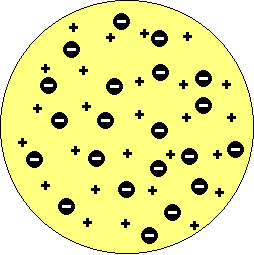Thompson's Theory
Background Information
· Lived during 1856 to 1940.
· British Physicist who received the Nobel Prize in physics for his discovery of the electron.
· His experimental work proved invaluable to physicists, including Rutherford his former student, and Bohr.
Experimentation
§ Began in 1895 to investigate the mysterious rays that occurred when electricity was passed through a vacuum in a glass tube. Unlike some scientists who assumed that these rays were waves, Thompson believed they were particles of matter. He named these rays cathode rays.
§ He built a cathode ray tube in which the rays passed through electric and magnetic fields that were perpendicular to each other. The rays became visible as a dot at the other end of the tube. By measuring the deflections of the ray as he change the strength of the electric and magnetic fields, Thompson determined the ratio of the charge to the mass of the particle (e/m). He decided the particles were negatively charged, by looking at the direction of their deflection. He then concluded these particles were a fundamental part of an atom, because the e/m was always the same.
Thompson’s Theory
Raisons in Pudding theory- the “pudding” could change, depending on the different particular element, but the raisins (the electrons) stayed the same.
He proposed a model of the atom in which negatively charged electrons were embedded in a positively charged sphere.

Raisons in Pudding Atom Theory Model